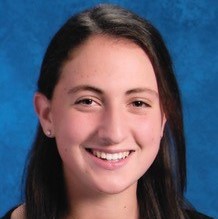Education First is dedicated to amplifying and elevating the voices and unique lived experiences of students, families and educators across the country. This guest blog is authored by Gabby Pelosi, a rising high school senior from North Salem High School, a small public school in Westchester County, New York.
Growing up, I have always aspired to be politically progressive. I have at times been a passionate voice in the fight to ameliorate the struggles that marginalized populations face, and I’ve always been eager to learn—yet I have only just begun to realize how little I know about the history of Black America. For so long I was taught that it was enough to treat others with compassion and kindness no matter their skin color. But I now realize that is not nearly enough. As a white student preparing myself to leave my school district—a high school located in a nearly all-white community in Westchester County, NY—I am just now being exposed to the tools that will allow me to seriously evaluate my own inherent racism, bigotries and privilege.
In reflecting on my public school education, I have to wonder how much of my learned biases stem from one important factor: the lack of diversity in my public school education. I am a rising senior, yet I have never had a Black teacher. In my district, with 1,060 students and 105 teachers, there is only one Black educator. This is not okay. Many of the teachers at my school identify as progressive in their views, but as white Americans, lack the experiences and perspectives in order to discuss issues of race, class and privilege with the same depth that a Black educator could. Take, for example, the teacher who called on the one Black student in class to get their opinion on slavery or the teacher who failed to omit racial expletives from their instructional materials.
When we are able to have conversations about Black history in school, they are often focused on specific stereotypes of the Black experience. We learn about Black figures like Harriet Tubman, Frederick Douglass and Martin Luther King Jr. in the context of slavery, abolitionism and the civil rights movement, but rarely ever outside the sphere of Black activism. While these are certainly important figures and events, what about Black artists, inventors, scholars and scientists? The history of Black Americans does not exclusively revolve around their relationship to white Americans, but that is what we’ve been taught.
This pattern continues into other subjects beyond just history. In my English classes, nearly all the books we’ve read have been written by white men—and many have specifically been about privileged white boys. These books—A Separate Peace, The Great Gatsby, Lord of the Flies, Catcher in the Rye, to name a few—have become the canon of American literature. Yet, they leave out so many other perspectives. What message does this send to students? To be clear, I do not think it is entirely my teachers’ fault for not providing me with a racially diverse and culturally responsive education. This is a systemic problem, compounded by the fact that my educators, who are teaching the Common Core, Regents and AP curriculums, are also operating within a flawed and limited system. As a teacher once told me, “history is written by the victors.” It’s time for us to change that.
To do my part, I am committing myself to learning how to be actively anti-racist. With this realization that I have more to understand about racism and racial injustices, I am intent on doing the hard work of constantly checking my biases and seeking Black perspectives. I hope that if more white progressives like me commit themselves to racial justice and stop contributing to the racist system that is the backbone of our country, we can one day truly live in the “land of the free.”

